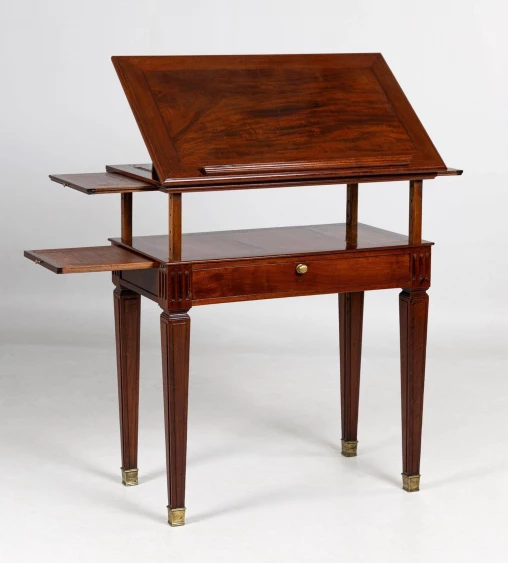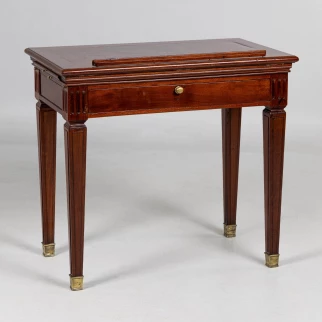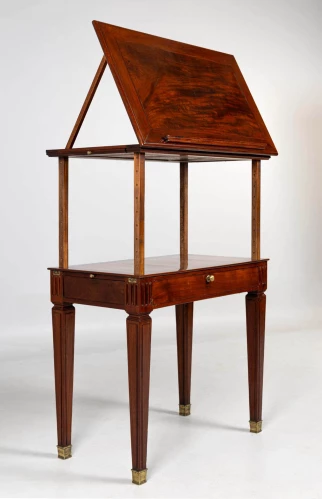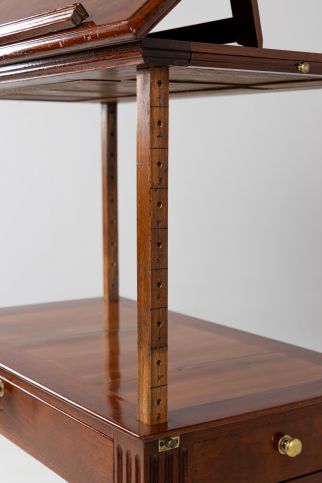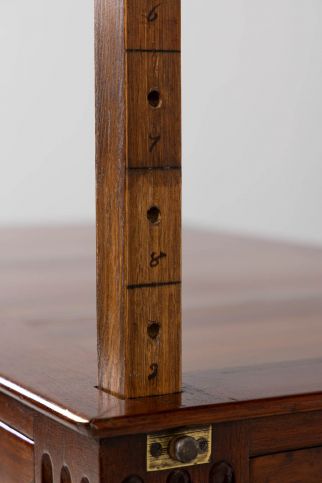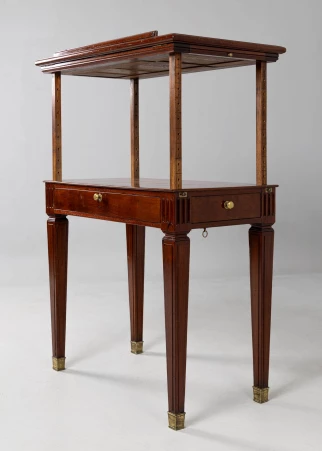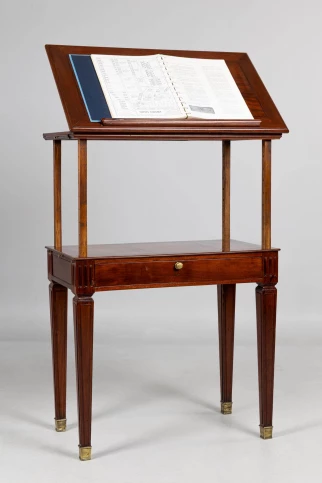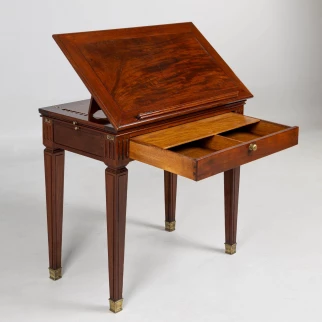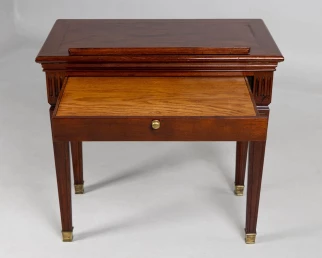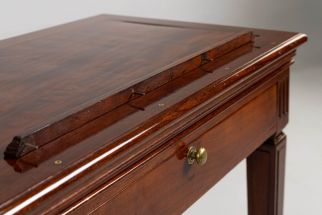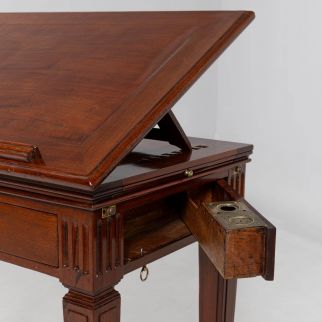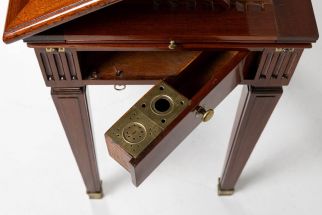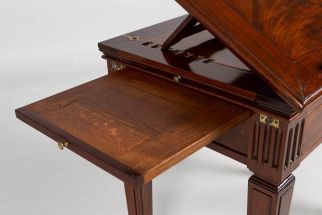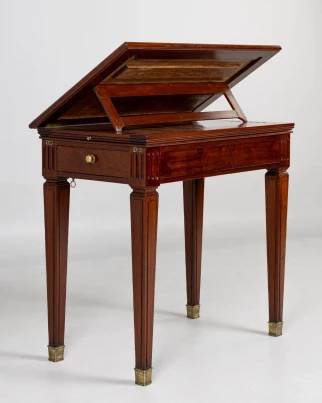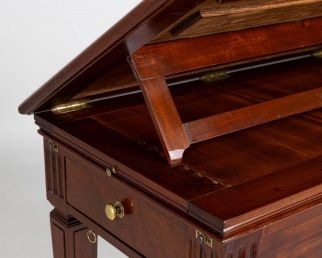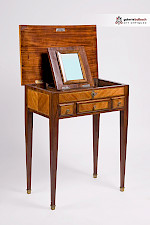Antique height-adjustable desk, architect's table, around 1800
France
Mahogany
around 1800
Dimensions: H x W x D: 78 x 84 x 50
Height-adjustable to approx. 120 cm, can be folded up to a total height of approx. 155 cm.
Description:
Writing and work furniture standing on square legs tapering downwards and ending in brass sabots.
The relatively large cross-section of the legs makes it possible to accommodate the four supports which ensure that the upper part of the work surface can be raised. The desk-like top is then locked in ten different height positions with the help of four cotter pins inserted at the side. This makes the table suitable for both sitting and standing work.
The work surface can also be set up at different angles of inclination, while a removable bookend ensures that the piece of furniture can be used as a reading desk or for presenting drawings.
The drawer at the front has another writing surface that can be pushed backwards. Underneath is a compartment for storing drawing paper.
The side tableau pull-outs were probably primarily used to store drawing utensils, candlesticks or similar items.
There is a hinged drawer on the right-hand side for storing ink and grit.
The austere and classic design goes well with the overall technical impression of the piece of furniture.
Interesting facts:
In the 18th century, there was an enthusiasm for furniture that concealed mechanisms and gear racks and that showed innovation in the cabinetmaker's craft, such as the desk offered here, the "Table à la Tronchin".
The Parisian cabinetmaker Louis Dufour (master craftsman 1764), who ran his workshop in the Rue Saint-Hyacinthe until the beginning of the Revolution, is considered the inventor of this table. He specialised in mechanical furniture and produced, among other things, armchairs for hospitals, chairs that could be converted into a bed and folding library ladders.
However, the type of furniture was not named after its inventor, but after the Geneva-born physician Théodore Tronchin (1709-1781), who was researching bone diseases at the time, which were often the result of architects sitting badly at their desks. He recommended to his patients a table with a tilting and height-adjustable table top, depending on whether they wanted to work standing or sitting.
Condition:
Restored, stable and suitable for everyday use.
Price: 4800,-€
Article found under: Tables
Add to shopping cartVideo height-adjustable desk
Also interesting
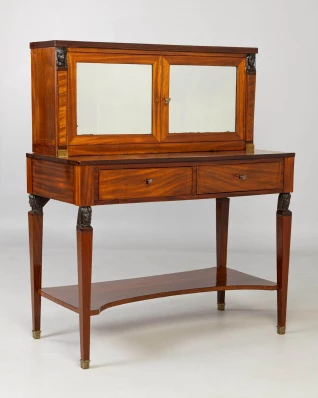
Retour d'Egypte console table with mirror top
England
Mahogany, marble, etc.
early 19th century
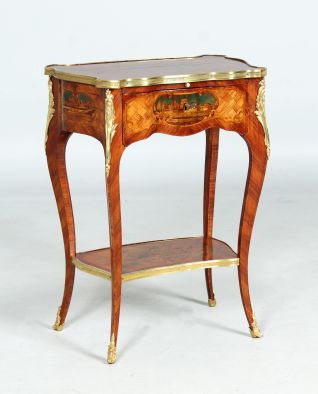
Finely inlayed ladies' desk
Paris
Rosewood a.o.
around 1880

Biedermeier chair with ink painting
Northern Germany
Birch
Biedermeier around 1820
